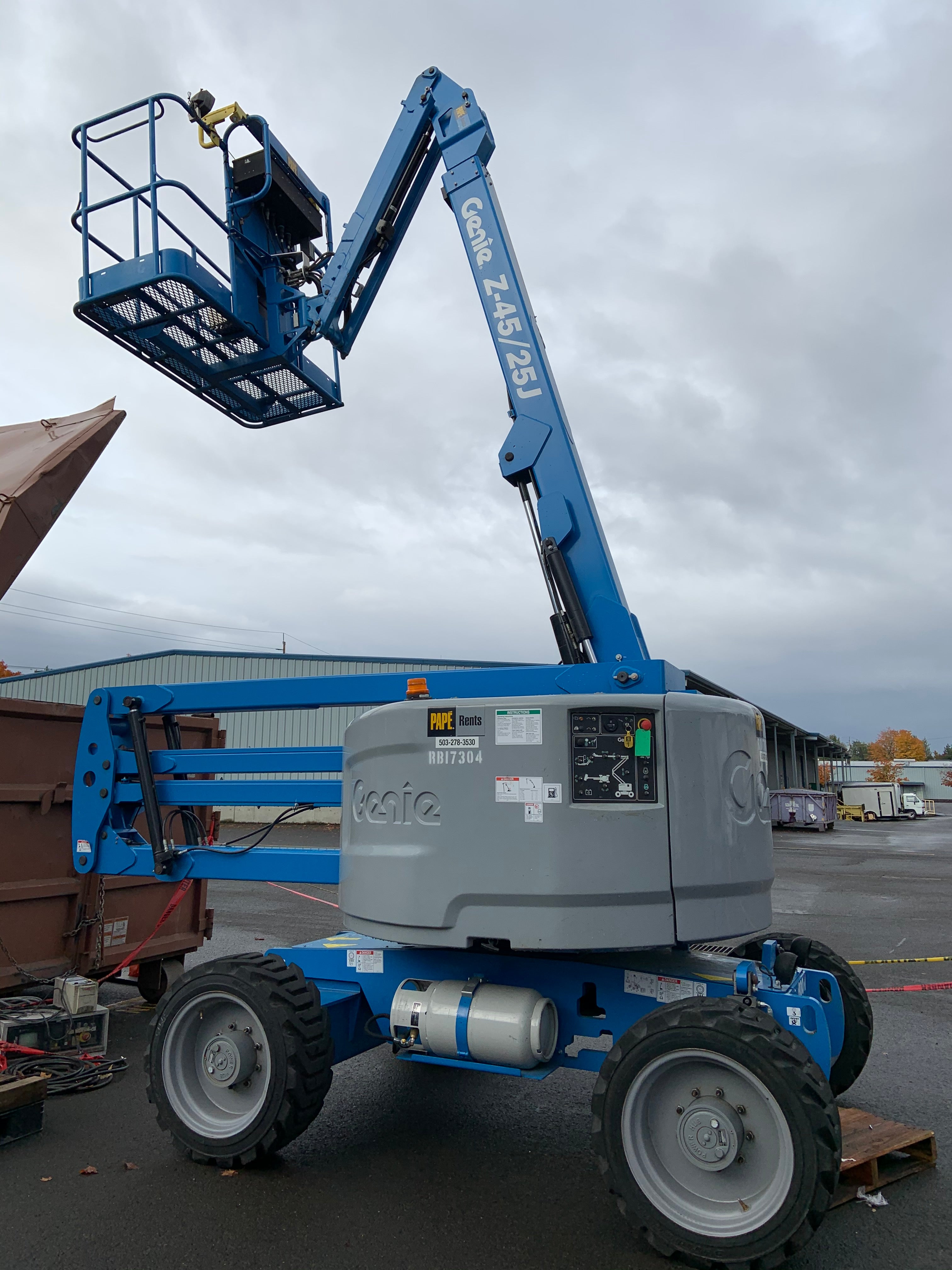NEW ANSI Standards in Effect 12/2019
In order to improve safety ANSI released a new standard for Aerial and Scissor lifts. This new Standard A92.22 and A92.24will combined the old standards ANSI/SAIA A92.3, ANSI/SAIA 92.5, ANSI/SAIA 92.6 and ANSI/SAIA 92.8.
Definition Changes
Aerial Lifts and Scissor Lifts will now be referred to as MEWP's (Mobile Elevating Work Platforms). They will be divided into two classifications (Group A Group B) and then three categories (Type 1, Type 2 and Type 3).
Group A will be defined as MEWP's "in which the vertical projection of the center of the platform area" always stays within the tipping lines (i.e. Scissor Lifts).
Group B is characterized as "MEWP's not in Group A". These are vehicles were the platform can extend out past the tipping point (i.e. Aerial Lifts. Boom Lifts).
Here is a brief video explaining the new classifications:
Training Changes
Some of the biggest changes will be in the training and certification process. Those that are not the operators of the MEWP, are now described as "occupants" and will need to be trained on the hazards of working on an MEWP and what to do in case of an emergency.
Supervisors will also need training to ensure that the operator and occupants are acting safely while working on the MEWP. They will be required to understand the rules and regulations of this new standard as well as become familiar with the operators manual and the importance of ensuring that it is stored on the MEWP.
Operators will need to be able to demonstrate the ability to perform a work site inspection and well as a pre-start inspection on the MEWP.
Here is a quick rundown of the new requirements:
Risk Assessment/Rescue Plan
A qualified person must now perform a rick assessment prior to the use of an MEWP. This should include a description of the job, location and time frame for the job. Hazards and risks should be evaluated and a description of safe work practices and what safety precautions will be taken.
An rescue plan must also be in place prior to beginning work in the event of a fall. The plan must be written and reviewed by all workers on the job site. The plan may include self-rescue, assisted rescue (by other trained workers) or emergency services rescue.
MEWP Equipment Design Changes
There are new design changes rolling out for new MEWP's being made. Some models may have reduced speeds or or reduced lift. A sensor will be added to sound an alarm when the safe load limit is exceeded and will prevent normal operations of the vehicle.Another new sensor will disable boom functions if the slope limit is exceeded, or, if outdoors and the wind speed is exceeded.
Chains will no longer be allowed as a means to block off the entrance, new MEWP's will have a gated entrance. If the vehicle will be used outdoors or in rough terrain, the will need to have foam filled or solid tires. Exceptions can be made for an indoor only MEWP.
The new standards can be purchased form ANSI.org, or clicking the links below. This new standard will be going into effect on 12/2019, one year after the approval was finalized and will replace all previous versions.
Check out our updated Aerial Lift Compliance Kit
References
JLG Training Standard ANSI A92.24 & CSA B354.8
New ANSI Standards for 2019 - Time is Running Out By: Mark Gates



1 comment
Lawrence Rozolsky
Did not specify it OSHA was going to adopt and enforce A92,22 and .24, or will it just be an ANSI Standard?